In a recent Office Hours session, we looked at how Brady Sticker is winning in the Church Marketing vertical and setting an example for others by executing a powerful combination of digital marketing and business growth strategies.
Brady Sticker runs ChurchCandy, helping churches grow using Facebook and Meta Ads. He’s a pastor’s son, and he’s planted a lot of churches. He’s even written several books on how churches can use digital marketing to get more people in the pews.
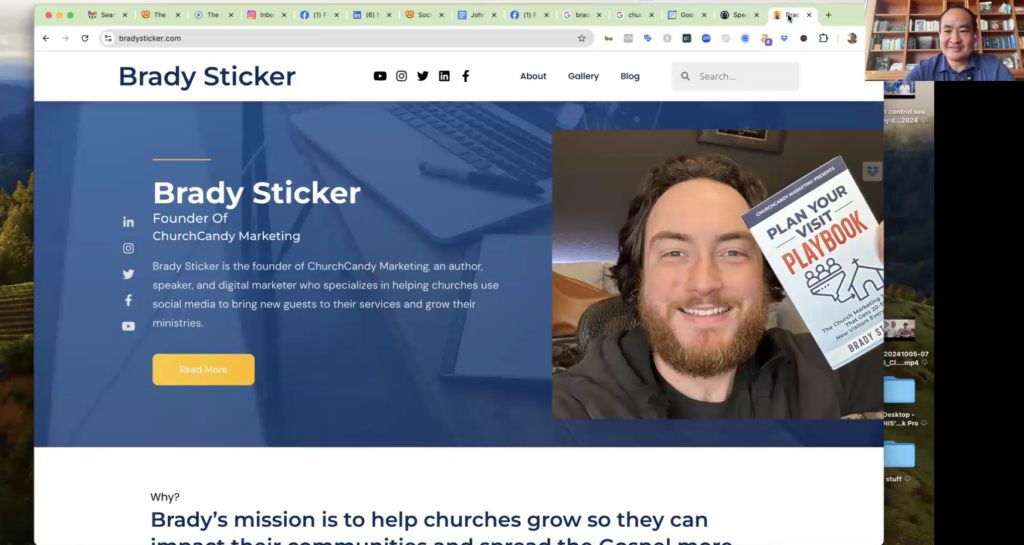
Brady’s dad, Billy Sticker, started ChiroCandy, which became an eight-figure agency serving chiropractors. So marketing is in his blood. But here’s the thing—Brady was not Googleable at all. This happens to a lot of agency owners. They get so focused on growing their clients’ businesses that they forget to market themselves. It’s the cobbler’s son issue in digital marketing—we see it all the time.
I told him, “Start featuring your clients.” And guess what? It worked. Now, instead of just saying “Hey, we run Facebook ads for churches,” he’s highlighting real pastors and their success stories.

And now, if you check out ChurchCandy’s YouTube channel, you’ll see over 100 success stories. Not just testimonials—real case studies, real churches.

He even made a bold bet: If ChurchCandy signs up 100 new churches in a month, he’ll let them tattoo anything they want on his body. That got attention.
One church got 710 people on their first Sunday. Another church 10X’d in a few months. And it’s all in a podcast-style format. A week ago, he even built a whole new podcast studio. Before that, it was just Zoom calls. This is next level.
Before this, if you Googled “Brady Sticker,” all you got were stickers for Tom Brady. Not helpful. But after setting up his personal brand site, tying it to ChurchCandy, and running Dollar-a-Day ads, now he ranks #1 on Google.
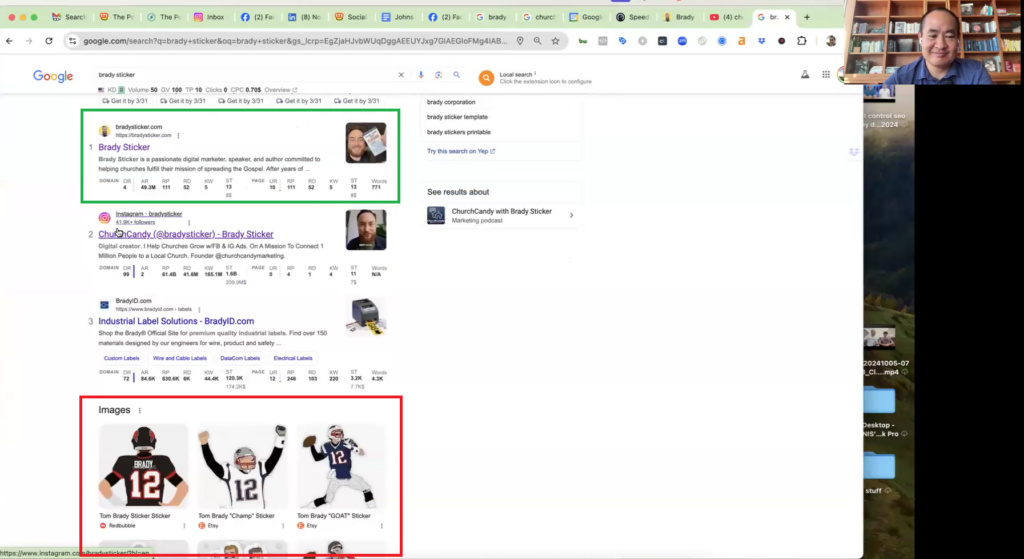
Brady’s visibility is skyrocketing:
- His personal brand site now ranks at the top.
- His Instagram is growing.
- His YouTube channel is loaded with real stories from real pastors.
- His second book is getting traction.
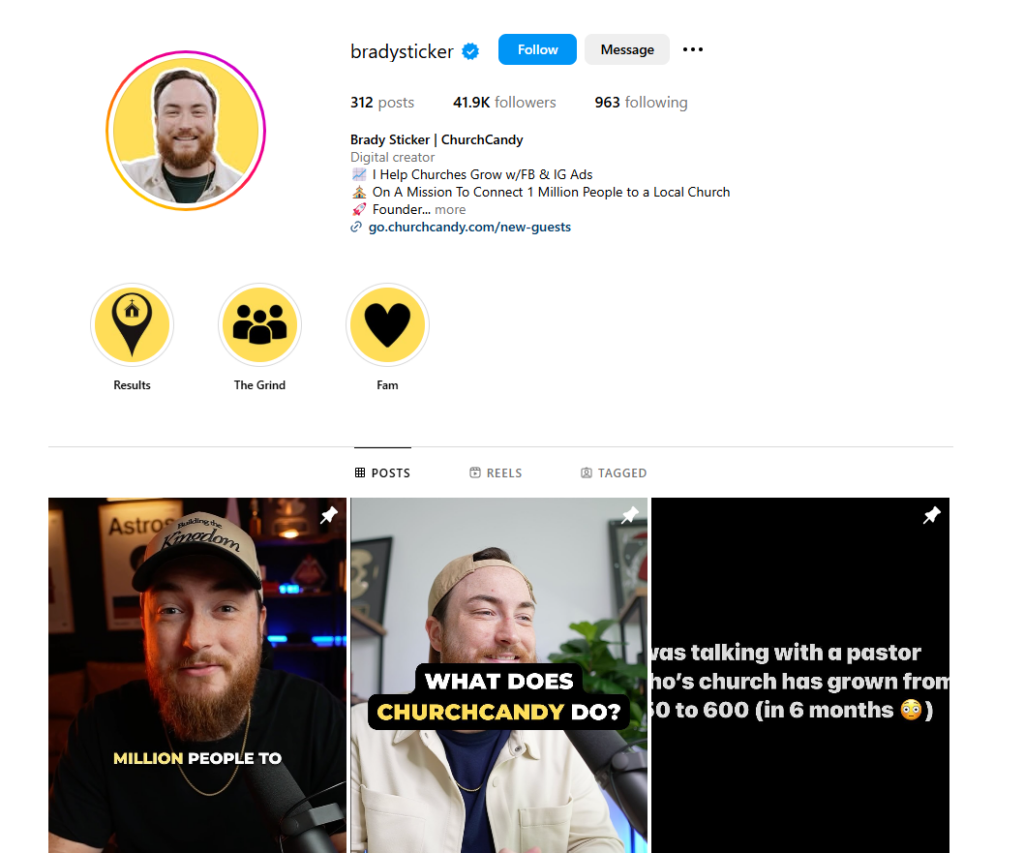
By actually showcasing his work, Brady is making himself Googleable. He’s proving he does what he says he does. That’s what matters. And with Dollar-a-Day, he’s making sure the right people see it.
SEO Improvement for ChurchCandy
I made a video about Brady at the top of the Burj Khalifa, the tallest building in the world at 828 meters, talking about how he’s become more Googleable—because he actually does what he says he does. And there’s tons of proof to back it up.
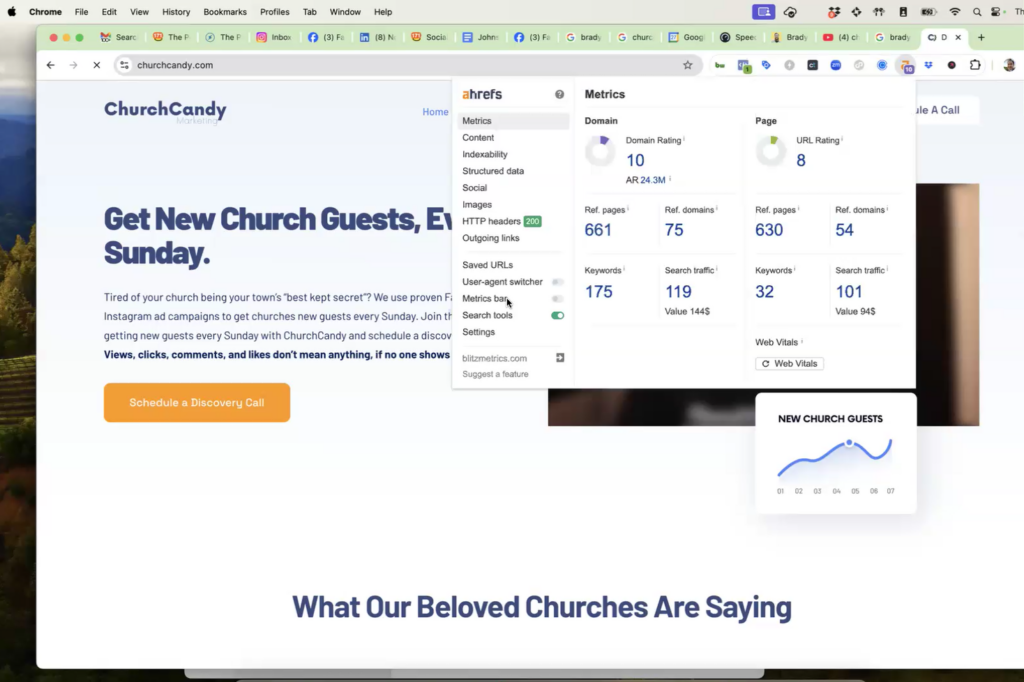
Before, his site ranked for nothing. But now, all the key stats are climbing. If you’re running Facebook ads for churches, you should actually rank for terms like “Facebook ads for churches.” And now it’s starting to work—not because we’re doing SEO tricks, but because there’s real EEAT (Experience, Expertise, Authority, Trustworthiness) behind it.
You can see it in the right mix of keywords:
- His name “Brady Sticker”
- “ChurchCandy”
- “Church marketing”
- “Digital marketing for churches”
- “Church marketing companies”
- Even “church SEO,” which isn’t exactly his focus, but it still ties in.

And then there are the articles related to it—Facebook ads for churches, church marketing services—all of it connecting back to his brand.
When we trace where the rankings are coming from, we see:
- The homepage ranks #1, which is typical for branded searches.
- Blog posts that have been repurposed from videos—which is the right way to do it.
This is key: When turning a video into an article, you need to match the intent and keywords. It’s not about stuffing SEO tags or forcing keywords—it’s about making sure that when people land on the page, they actually get what they’re looking for. If Google sees that users have a good experience, they’ll send more people searching for those same terms.
Now, things are looking good—we’re seeing pages on almost all the keywords moving up in rankings. But there’s always room to improve.
And for ChurchCandy, the biggest gap is the lack of enough pages.
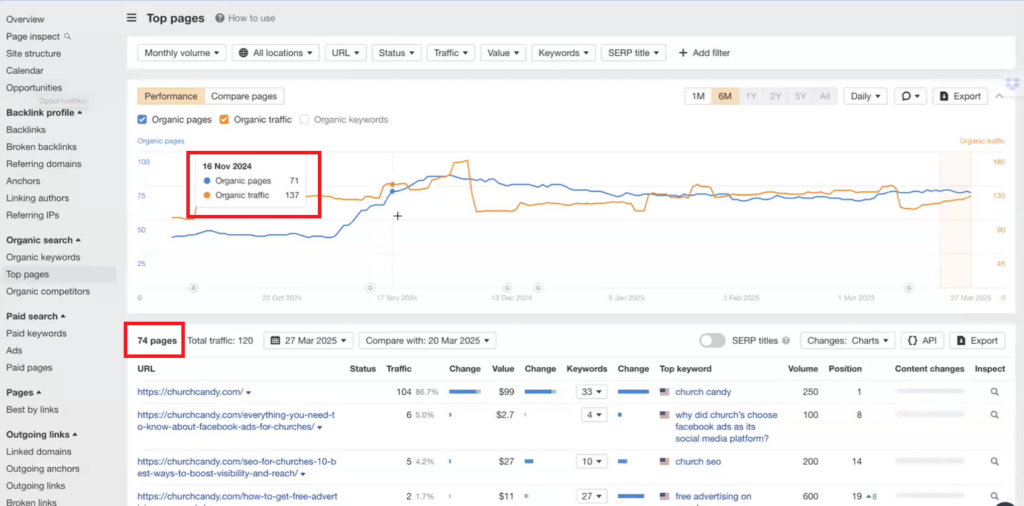
And that’s on us—Brady has given us the green light to help him, so we need to keep pushing more content out. I’ll show you a few examples, because this applies to all of us.
How the Content Factory Works for Content Optimization
If you apply the Content Factory process, which includes MAA at every step (focusing on what’s working best instead of trying to do everything), you can see exactly how to scale content the right way.
Brady has 206 videos—that’s a lot. But instead of just cranking out more videos, why not focus on what’s already working best? And best doesn’t mean the most views—it means what’s bringing in the most clients.
We analyze his top-performing content using different methods. We look at:
- The top keywords: Social media strategies for churches, church websites, church promotion, church planting.
- The pattern in engagement: What videos people watch the longest, what generates leads.
- The specific results: One church grew from 150 to 600 in 6 months using Facebook ads, and Brady walks through exactly how they did it. Another church got 500+ people to show up on their first Sunday service.
By looking at stats from his channel, we can pinpoint the highlight moments that drive the most impact. That’s what should be repurposed into more content.
And it’s not just Brady talking—it’s his clients talking. That’s key. The majority of his content should be churches sharing their stories, not just him explaining things. Way more authority, way more variety.
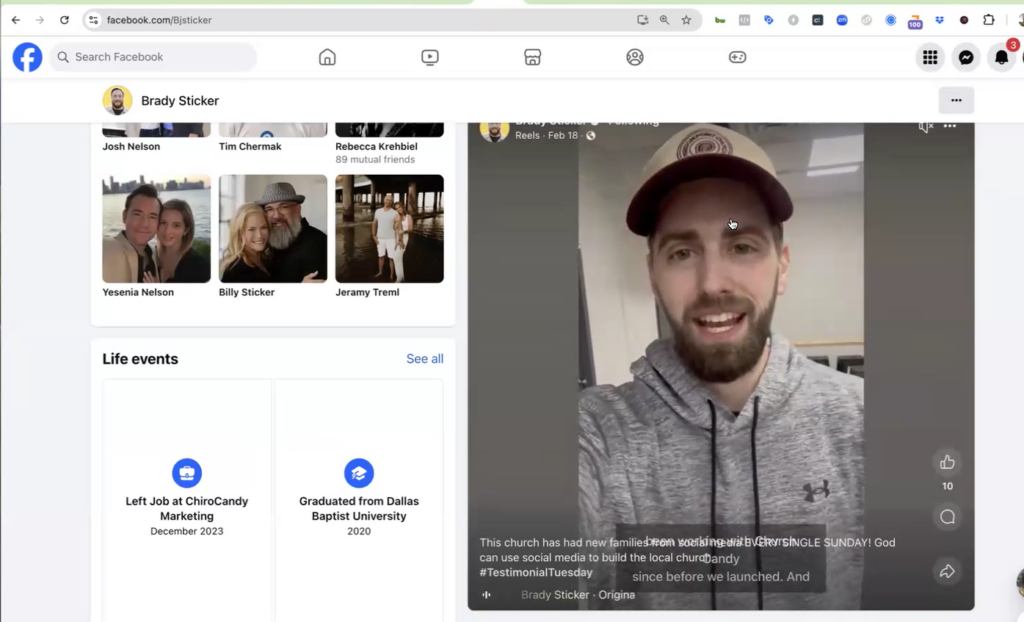
When this content is repurposed correctly, it spreads across multiple platforms. He’s even won awards for this approach. I’ve interviewed him on my podcast multiple times, and he’s constantly edifying his clients, his family, and these churches. Only one in ten posts is a promo. The rest is all about elevating others, and that’s why more churches want to work with him.
Pastors see their peers growing with ChurchCandy, and that social proof is what drives new business.

Brady’s success comes from proving that what he does actually works, and making sure his clients tell those stories for him.
This is something I see missing with a lot of service providers, especially high-ticket coaches. Maybe they think their clients won’t provide testimonials, or they don’t have enough proof. But this is key—this is the first E in EEAT: Experience.
Google wants to see real experience—not just claims. Most people talk about branding, but where’s their proof? If you say you build brands, I should be able to Google your name and see that you actually do what you say you do. Otherwise, you’re just another weight loss coach who’s out of shape.
And now, we’ve turned this entire process into an example. Before, Brady owned almost nothing under his name in search results. Now, we’ve taken over two-thirds of page one.
Co-Created Content and Social Media Growth
I’ve looked at thousands of coaches, authors, and experts, and it’s always the same—just them talking.
But look at this: almost all of Brady’s content is co-created. Not everyone in his videos is a paying client. Most are, but he highlights other people too. He’s got an abundant mindset—he’s not just promoting himself or his own clients. He’s featuring real stories, and that’s why it works.

Folks who don’t co-create content think ads will fix everything. But if all you do is talk about yourself, you’re missing the point. Brady wins because he’s always highlighting others—and that’s why people trust him.
A lot of people say, “This wouldn’t work in my industry.” Well, check out what Colby Davis, who runs Davis Painting is doing!
